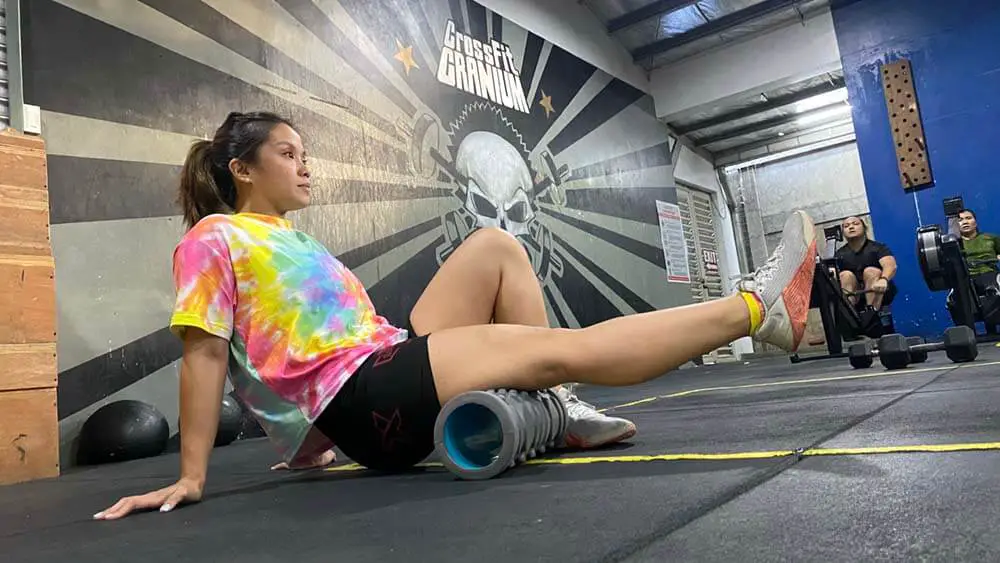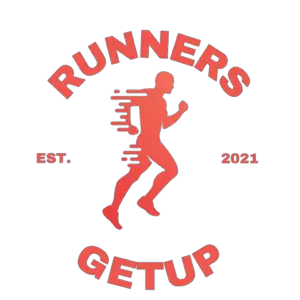This post contains affiliate links.
Recovery is just as important as the workout itself. This is why recovery tools like foam rollers are a popular tool amongst runners and other athletes. But are they actually good for runners? I researched the literature surrounding the topic and here’s what I found.
Foam rolling after an exercise improves the recovery rate and is beneficial for reducing muscle soreness. This can help runners come back to training faster and fresher than they would if had they not used the foam roller.
Ahead we will talk more about foam rollers, how they work, and how to choose a good foam roller.
How Foam Rollers Work

If you’ve been working out or running for any length of time, you’ve probably heard of foam rollers. You may even have one in your house. But do you know how they work?
Foam rollers are cylindrical pieces of foam that runners use to massage parts of their body by rolling into it.
But contrary to common beliefs, foam rolling doesn’t actually break up adhesions in the muscle tissue.
Instead, they work by affecting the viscoelastic properties of your muscles and fascia as well as your nervous system.
Foam rolling does a number of physiological changes in your body which leads to their short term and long term effects such as:
- Increase blood flow – great to help muscles recover
- Short term lengthening of muscle – a great way to spice up your stretching session
- Reduces muscle soreness – which allows you to train again the next day
They come in a variety of sizes and firmness. Some even have bumps and ridges designed to help isolate a muscle knot and be used as a myofascial release tool.
Runners and athletes use foam rollers to relieve pain, tension, and stiffness in the muscles. They can also help improve flexibility in the short term.
Should Runners Foam Roll?
There is a lot of debate around whether or not runners should foam roll. Proponents say that foam rolling helps to improve performance, prevent injury, and speed up post-run recovery.
However, there is also a fair bit of research that suggests that the benefits of foam rolling are overstated making it a waste of time.
In 2019, a group of researchers compiled the different literature surrounding the effects of foam rolling in the performance and recovery of athletes.
The researchers concluded that foam rolling before an exercise is effective at improving flexibility for the short term without decreasing muscle performance.
For runners, this can help improve the stride of runners with limitations of motion without sacrificing muscle performance. But it isn’t applicable for runners who already have a good range of motion.
Furthermore, the researchers also concluded that foam rolling after an exercise session significantly improves the recovery rate.
That said, foam rolling allows runners to get back to training faster compared to runners who skip the post-rolling session.
Whether you need that extra boost in recovery or not solely depends on your body, your training, and your available time.
At the end of the day, it is up to each individual runner to decide whether or not to foam roll. If you do decide to foam roll, be sure to do it correctly and pay attention to how your body feels after rolling.
Related post: Should You Stretch Before Or After Running?
When Should Runners Foam Roll?
If you’re like most runners, you’ve probably wondered whether you should foam roll before or after your run.
Although it won’t hurt spending 5-10 mins before a run, the literature suggests that the best time to foam roll is after your workout.
And while you’re at it, consider doing a few minutes of post-workout stretching too.
I’ve made a full article about when to foam roll including links to the studies that back it up. Check it out.
How Often Should Runners Foam Roll?
There’s no magic number to how often you should foam roll. You can do it 3 times a week to as much as 3 times a day as long as you don’t feel pain or have bruises after your foam rolling session.
But given the fact that foam rolling seems to be most effective in helping you recover when done post-run, it’s best to do the foam rolling as often as you do your running.
So if you’re running 5 times a week, consider foam rolling post-run 5 times a week.
Can You Overdo Foam Rolling?
Foam rolling isn’t just all good. Like all things, too much foam rolling can be bad for you or even counterproductive.
Foam rolling a particular muscle group for too long might cause bruises, pain and possibly even delay your recovery.
As a general rule, only spend 30 to 90 seconds per muscle group to avoid bruising. Also, make sure you only apply adequate pressure that you don’t feel pain.
The Best Type Of Foam Roller For Runners
Not all foam rollers are created equal. Some of them feel too soft that you barely feel anything, while others may feel too firm that you feel pain however you do it.
But, to help you with your buying decision, here’s a quick guide in choosing the best foam rollers.
- Medium-density – these foam rollers are firm enough so you can benefit from the effects of foam rolling while still feeling comfortable.
- knobs and ridges – foam rollers with knobs and ridges allow you to isolate muscle knots and go deeper into your muscles. They can also be used as a myofascial release tool.
A foam roller that I recommend is the 321 Strong foam roller. It’s got all the features we discussed plus it’s sold in many exciting designs and colors.
How Should Runners Do Foam Rolling?
Wondering how to use your foam roller? Here’s an awesome follow along video from Marathon Handbook that will show you exactly how.
In this video, she included the muscles used for running. That includes:
- Glutes
- Hamstrings
- IT band/thighs
- Quadriceps
- Adductors
- Calfs
- Shins
- Feet
That’s just one of the many post-run stretching you can do. I personally follow that everytime I do a post-rolling session.
Final Thoughts
Foam rolling is proven to be effective at supporting muscle recovery when done post-workout. That is why runners should consider it as an effective recovery tool when training for an endurance event like a marathon.
If you find this article helpful, please share it with your friends or anyone looking for information.

